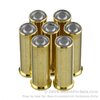TacticalJanitor
Member
For decades, if not half centuries, the 38 Special 2700 Bullseye Pistol was a 148 WC grain bullet with 2.7 (ish) grs Bullseye Pistol powder. The desired velocity was 740 fps for stability at 50 yards. Based on the lot, the charge spread might be 2.6 grs to 2.8, with 2.9 on the high end. A shooter I know, a ten time PPC winner, 2.7 grains with a 148 lead was his load, unless he had to make major. The WC could be hollow base or flat base wad cutter.
That shooter said he had 600,000 rounds of lead bullets through his Shilen barreled K frame pistol, and it still grouped within 2 inches at 50 yards. It is hard to wear out a pistol barrel firing lead bullets and light loads. He did wear out cylinder ratchets, broke a firing pin, springs wore out, the pistol needed to be retimed. Still, his S&W did outstandingly.
If Bullseye Pistol powder is not available, Titegroup is an outstanding target powder. A PPC bud of mine used AA#2 with 148's. I think if these are hard to find W231/HP38 will do well, and is infact better for faster loads. The fast burning powders (Bullseye, Titegroup, AA#2, etc) are not flexible, you need to keep away from maximum loads in case you mess up, and put more powder in the case by accident.
I will say, the most flexible pistol powder I have used is Unique. In the 38 Special at standard velocities, that is a 158 grain lead at 760 fps, it does well. Not as good as Bullseye at the bottom end, but much better at max velocities.
And thank you too Sir. I'm not particularly married to the 800fps figure...the wadcutters that I can buy locally are specified to be around that speed. Tomorrow I'm going to order a chronograph so that I can start figuring out the actual numbers are with my sub 2-inch barrels.
As my skills with the J frames get to where I'd like them to be, I plan to gradually start increasing pressures in an effort mimic a (yet unknown) .38+P factory defense round until my splits fall below levels I'm not comfortable with.
Does having j frames rated for .357 mag reduce the chance of a kaboom with .38 Special?





